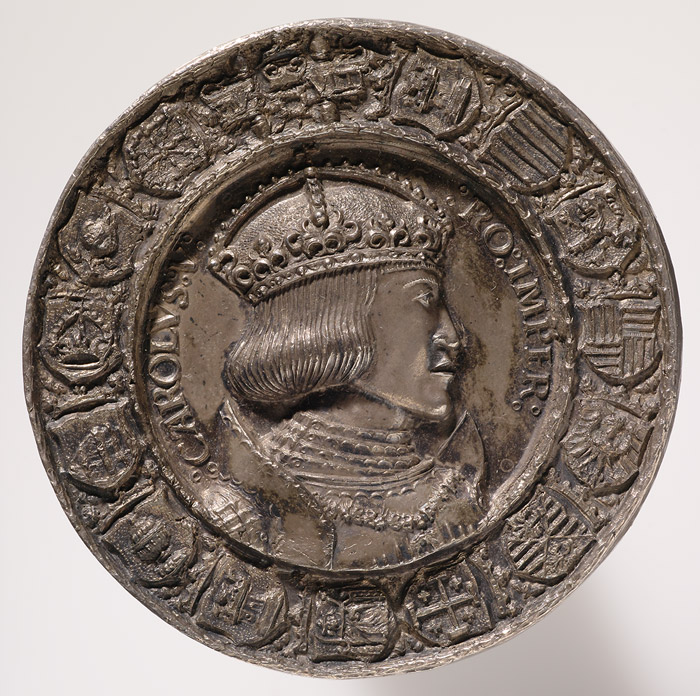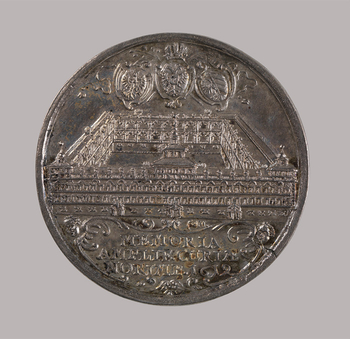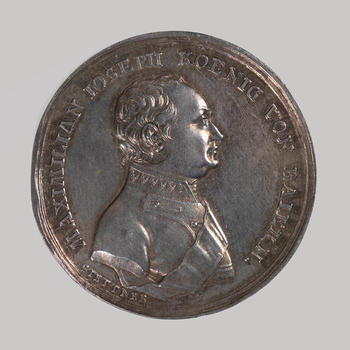Medals and commemorative coins of the imperial city of Nuremberg, 1521-1806
Project duration: 2009 – 2013
No other German city has recorded its own history as comprehensively as the imperial city of Nuremberg. The series of medals commemorating events in Nuremberg starts with a large silver medal that the city council intended to present to Charles V on his planned but aborted visit in 1521. Imperial visits, often associated with the homage by the council and citizenry, were the most outstanding events in the life of the city, which were supposed to be recorded for posterity through medals. Alongside, the city council had coined gold guilders or ducats, which it presented to the emperor upon arrival as official gift. Other distinguished visitors also received golden or silver medals, especially in the 18th century, of which the council always held a certain amount. These medals may bear reference to peace treaties, imperial coronations, or similar events, which were also important outside of the city. Over several decades, the council gave away as gifts golden and silver medals commemorating the imperial relics, which had been passed in trust to the city, in order to embellish its special position.
Besides medals the council presented to persons from outside the city, it coined medals – primarily at anniversaries – that often had the value of current coins, which it distributed among the citizens. Among them count medals commemorating the Reformation, which were given, in descending value, to clergymen, school attendants and pupils, respectively. Medals were also coined at anniversaries of the city’s Gymnasium (Latin school) and the university in Altdorf and distributed among the participants. The council repeatedly arranged shooting matches lasting over several days, for which participants came from far away. The winners received an ox or a medal especially coined for the occasion. Further commemorative medals were coined in remembrance of the event.
A group of their own are medals which were cast or coined at the laying of the foundation of public buildings or bridges. Nuremberg was the first city north of the Alps which commissioned a medal in 1538 at the laying of the foundation of the extension of the Vestnertor-Bastei. Medals in silver, bronze or lead were put into the cornerstone; further examples were given to the “Ältere Herren“ (the council’s Elders) and the architect. City chronicles contain detailed descriptions of the laying of foundations of public buildings and the attendant ceremonies.
But it was not only the city council that had medals coined, societies such as the “Pegnesischer Blumenorden“ (a literary society), the “Handlungsdienerhilfskasse“ (a provident relief fund for shopkeeper’s apprentices, errand boys, etc), or the Nuremberg printers honoured their anniversaries in the same way. Finally, Nuremberg’s patricians and burghers issued medals at the laying of foundations, extensions or completion of their houses in the city or their castles in the surrounding countryside.
A medal on the occasion of the incorporation of Nuremberg into the kingdom of Bavaria, ending the city’s imperial immediacy, closes the series of roughly 400 medals and coins commemorating Nuremberg events, putting the last point to a “chronicle in metal“ of the city.
The goal of the project is the cataloguing of all relevant medals with their numismatic data, descriptions of their visual images, recording of inscriptions and circumscriptions – if necessary with translations –, as well as their historical and cultural context. It is planned to publish the results in a book.
Publication
Dieter Fischer, Hermann Maué. Medaillen und Schaumünzen auf Ereignisse in der Reichsstadt Nürnberg 1521-1806. Wissenschaftliche Beibände zum Anzeiger des Germanischen Nationalmuseums, Bd. 34. Nürnberg 2014. Best.-Nr: 771
Further Objects

Information and Services
Plan Your Visit
Opening Times
Location and Approach
GNM Museum Shop
FAQ
Library
Branches
Contact



